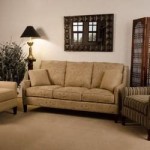How To Preserve Teak Garden Furniture
Teak garden furniture is a popular choice for outdoor spaces due to its durability, natural beauty, and resistance to the elements. However, even this robust hardwood requires proper maintenance to ensure it retains its aesthetic appeal and structural integrity for years to come. Preservation involves a combination of regular cleaning, appropriate treatment application, and proactive protection against environmental factors. This article will detail the necessary steps to effectively preserve teak garden furniture, maximizing its lifespan and maintaining its value.
Teak is a dense, close-grained hardwood naturally rich in oils. These oils contribute significantly to its resistance to rot, decay, and insect infestation. However, prolonged exposure to sun, rain, and temperature fluctuations can gradually deplete these natural oils, leading to a weathered appearance, surface cracks, and potential structural weakening over time. Therefore, understanding the factors that impact teak's longevity is crucial for implementing an effective preservation strategy.
The natural aging process of teak results in a characteristic silver-gray patina. While many appreciate this aesthetic, it's essential to understand that this change in color is a sign of surface oxidation and oil depletion. If the desired appearance is the original honey-brown tone of new teak, proactive preservation measures are necessary to slow or prevent this natural weathering process.
Regular Cleaning: The Foundation of Teak Preservation
Consistent cleaning is the most fundamental aspect of preserving teak garden furniture. Removing dirt, debris, mildew, and algae prevents these contaminants from penetrating the wood and accelerating the weathering process. Frequency of cleaning depends on environmental factors such as proximity to trees, exposure to pollution, and local climate conditions.
For general cleaning, a mild soap solution is typically sufficient. A mixture of dish soap and warm water applied with a soft-bristled brush or sponge effectively removes surface dirt and grime. Avoid using harsh chemicals or abrasive cleaners, as these can damage the wood surface and strip away natural oils.
The cleaning process should begin with a thorough rinsing of the furniture with a garden hose to remove loose debris. The soap solution is then applied evenly, and the surface is scrubbed gently to dislodge any embedded dirt. Pay particular attention to joints and crevices where dirt tends to accumulate. After scrubbing, rinse the furniture thoroughly with clean water to remove all traces of soap. Allow the furniture to air dry completely before applying any further treatments.
For more stubborn stains or mildew growth, a specialized teak cleaner may be required. These cleaners typically contain mild bleaching agents that help to remove discoloration and kill mold spores. Always follow the manufacturer's instructions carefully when using teak cleaners, and test the product on an inconspicuous area first to ensure it does not damage the wood.
Power washing teak furniture is generally not recommended, as the high pressure can damage the wood fibers and lead to splintering. If power washing is necessary, use a low-pressure setting and a wide-angle nozzle, and keep the nozzle at a safe distance from the surface. Move the nozzle in a steady, even motion to avoid concentrating the pressure in one area.
After cleaning, it's crucial to allow the teak to dry completely before applying any protective coatings. Trapped moisture can promote mold growth and accelerate decay. Monitor the furniture for any signs of mold or mildew growth after cleaning and address it promptly to prevent further damage.
Applying Teak Oil or Sealer: Restoring and Protecting
Once the teak furniture is clean and dry, the next step is to apply a protective coating to replenish the natural oils and provide a barrier against the elements. Several options are available, including teak oil, teak sealer, and teak protector. Each product offers different levels of protection and aesthetic effects, and the choice depends on individual preferences and the desired level of maintenance.
Teak oil is a traditional treatment that penetrates the wood and restores its natural oils. It enhances the wood's color and provides a water-repellent finish. However, teak oil typically requires frequent reapplication, often every few months, to maintain its protective properties. It is important to note that teak oil can sometimes promote mildew growth in humid environments.
Teak sealer provides a more durable and longer-lasting protection than teak oil. It forms a protective film on the surface of the wood, preventing water penetration and UV damage. Teak sealers typically require reapplication every one to two years, depending on the product and the environmental conditions. They generally provide better protection against mold and mildew than teak oil.
Teak protectors offer a similar level of protection as teak sealers but are often formulated with additional UV inhibitors to further protect the wood from sun damage. They may also contain biocides to prevent mold and mildew growth. Teak protectors typically require reapplication every one to two years, depending on the product and the environmental conditions.
Before applying any coating, it's essential to prepare the surface properly. Lightly sand the teak with fine-grit sandpaper to remove any loose fibers or imperfections. Clean the surface thoroughly to remove any sanding dust. Apply the coating evenly with a brush, roller, or cloth, following the manufacturer's instructions carefully. Allow the coating to dry completely before using the furniture. Apply multiple coats as recommended by the manufacturer for optimal protection.
When selecting a teak oil, sealer, or protector, choose a high-quality product specifically designed for outdoor teak furniture. Avoid using generic wood oils or sealers, as these may not provide adequate protection and could damage the wood. Read the product labels carefully and follow the manufacturer's instructions for application and maintenance.
Proper ventilation is essential when applying teak oil, sealer, or protector, as these products often contain volatile organic compounds (VOCs). Wear gloves and eye protection to avoid skin and eye irritation. Dispose of used applicators and containers properly according to local regulations.
Protecting Against Environmental Factors: Minimizing Exposure
In addition to regular cleaning and treatment, protecting teak garden furniture from environmental factors is crucial for prolonging its lifespan. Minimizing exposure to sun, rain, and extreme temperatures can significantly reduce the rate of weathering and prevent damage.
During periods of heavy rain or snow, consider covering the teak furniture with waterproof covers. This will prevent water from soaking into the wood and causing swelling, cracking, or decay. Ensure the covers are breathable to allow for air circulation and prevent moisture buildup.
Prolonged exposure to direct sunlight can cause the teak to fade and dry out. Position the furniture in a shaded area or use umbrellas or awnings to provide additional protection. Rotate the furniture periodically to ensure even exposure to the sun and prevent uneven fading.
Extreme temperatures can also damage teak furniture. During winter months, consider storing the furniture indoors or in a sheltered area to protect it from freezing temperatures and snow. If storing the furniture outdoors, elevate it off the ground to prevent moisture buildup and insect infestation.
Protecting the furniture from physical damage is also important. Avoid placing heavy objects on the furniture, as this can cause dents or scratches. Use coasters and placemats to protect the surface from spills and stains. Repair any damage promptly to prevent further deterioration.
Inspect the furniture regularly for any signs of insect infestation or fungal growth. If infestations are detected, treat the furniture with appropriate insecticides or fungicides. Consult a professional arborist or pest control specialist for advice on the best treatment options.
By implementing these preservation strategies – regular cleaning, protective treatment application, and proactive protection against environmental factors – teak garden furniture can maintain its beauty and structural integrity for many years to come, providing a lasting investment for outdoor living spaces.

The Best Method To Restore Teak Outdoor Furniture Cuckoo4design

Why Sanding Is The Perfect Method To Restore Old Teak Furniture

How To Clean Restore Outdoor Patio Ipe Wood Furniture Teak Master Youtube
How To Protect Teak Outdoor Furniture

How To Care For Teak Outdoor Furniture Neighbor

4 Tips For How To Protect Teak Outdoor Furniture Deck Professionals

How To Preserve Your Teak Wood Furniture Ask The Experts

Restore Outdoor Teak Table No Sanding Cleaning Oiling Youtube

How To Keep Your Teak Garden Furniture Looking New

10 Essential Tips To Protect Teak Outdoor Furniture








